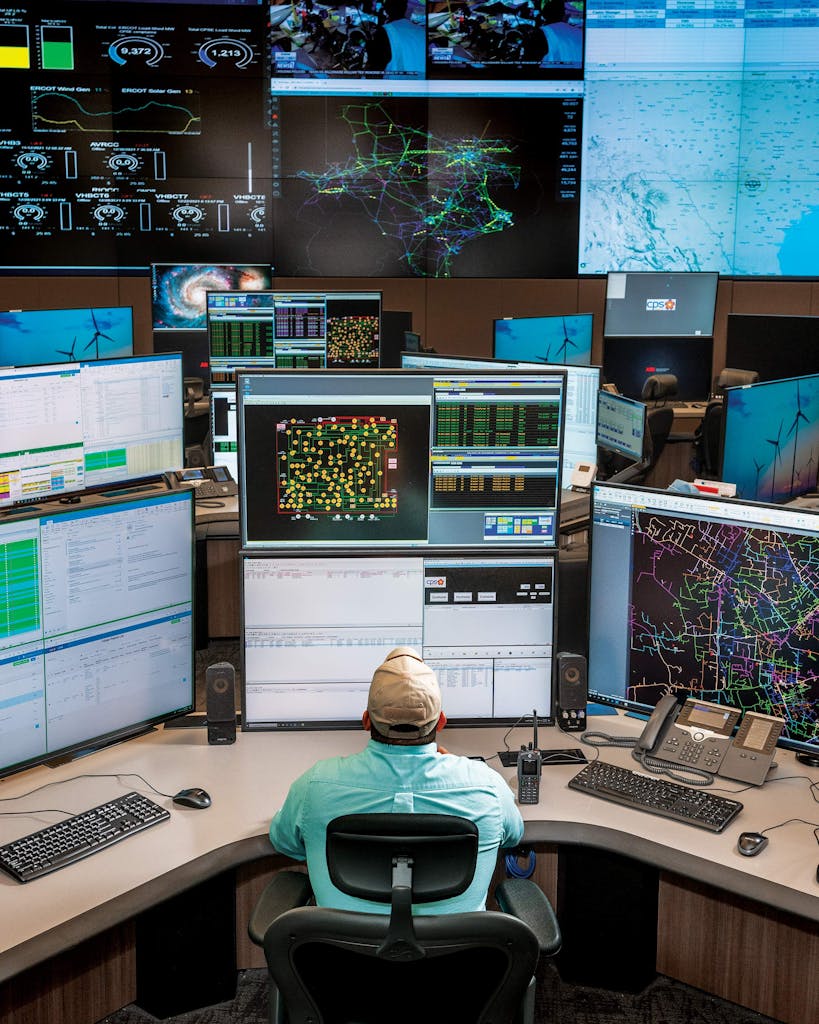The Texas Electric Grid Failure Was a Warm-up
One year after the deadly blackout, officials have done little to prevent the next one—which could be far worse.
Anthony Mecke had drifted to sleep in the break room when a loud knock roused him at 1:23 a.m. “We just got the call,” a coworker said.
Mecke, a moonfaced 45-year-old, is the manager of systems operation training at CPS Energy, the city-owned electricity provider that serves San Antonio. He started at the company not long after high school, working at one point as a cable splicer, a job he performed in hot tunnels beneath the sidewalks of San Antonio. He thought he’d seen it all. But when he hustled from the break room, where he’d sneaked in a power nap after an all-day shift, into the company’s cavernous control room, housed in a tornado-proof building on the city’s East Side, what he witnessed unsettled him.
This was Monday, February 15, 2021. A winter storm had brought unusually frigid temperatures to the entire middle swath of the United States, from the Canadian border to the Rio Grande. In San Antonio, it dropped to 9 degrees. In Fort Worth, the storm’s icy arrival a few days earlier had led to a 133-vehicle pileup that left 6 dead. Abilene and Pflugerville had advised residents to boil their water, the first of thousands of such warnings that would eventually affect 17 million Texans. Across the state, families hunkered down and did anything they could to stay warm. The overwhelming majority of Texas homes are outfitted with electric heaters that are the technological equivalent of a toaster oven. During the most severe cold fronts, residents crank up those inefficient units, and some even turn on and open electric ovens and use hair dryers.
